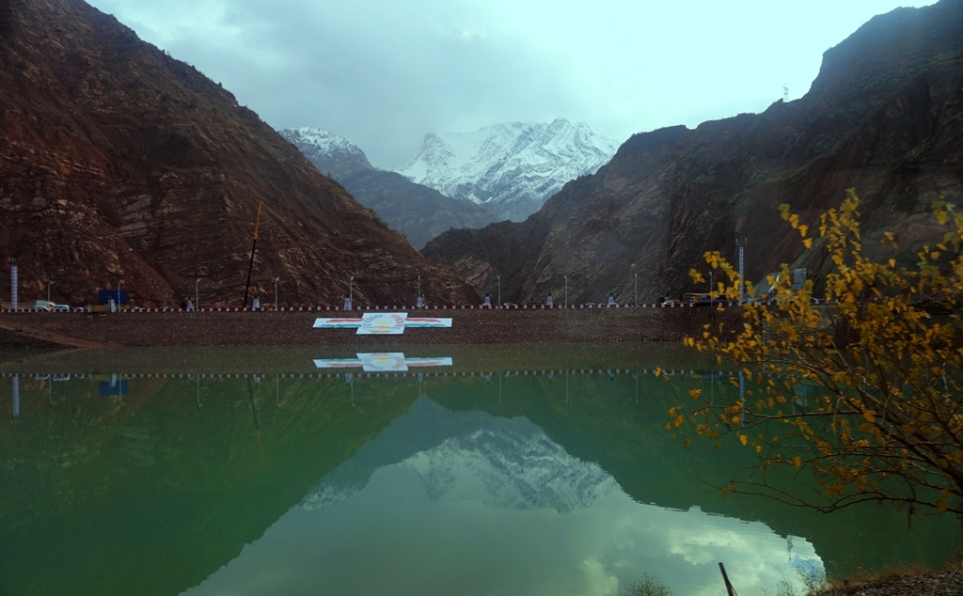More than 50 local and foreign companies are engaged in completing the construction of the Roghun hydroelectric power plant (HPP). Among them are companies from Iran, Russia, China and other countries. The general contractor is Italian Salini Impregilo, which is constructing the plant’s dam.
In all, more than 20 people now work at the site for construction of the Roghun HPP; more than 3,000 of them are engaged in construction of the dam.
According to Open Joint-Stock Company (OJSC) NBO Roghun, some 12 billion somoni have been spent for construction of the Roghun HPP since 2008.
An official launch of the first unit of the Roghun HPP into operation is set for November 16 and Tajik President Emomali Rahmon will unveil the first facility of the plant.
Officials from foreign countries, including nations participating in the CASA 1000 Project, and senior representatives of diplomatic missions and international organizations active in Tajikistan have been invited to attend the event.
The second unit of the Roghun hydropower plant is expected to be introduced into operation in April next year. The last sixth unit of the plant will be introduced into operation in 2028, when plant’s dam will reach the planned height.

The current volume of water in the reservoir powering the Roghun HPP is 214 million cubic meters that is enough for introducing the first unit of the plant into operation. The current height of the Roghun dam is more than 75 meters that allows ensuring regular operation of the unit.
The Roghun HPP’s engine room is located within the mountain at a depth of 420 meters. The engine room is 220 meters in length and 22 meters in width; all 6 power-generating units will be installed in the engine room.
Tajikistan stemmed the flow of the Vakhsh River for construction of the Roghun HPP in late October 2016.
Roghun HPP is an embankment dam in the preliminary stages of construction on the Vakhsh River in southern Tajikistan. It is one of the planned hydroelectric power plants of Vakhsh Cascade.
The Roghun HPP was first proposed in 1959 and a technical scheme was developed by 1965. Construction began in 1976 but the project was frozen after the collapse of the Soviet Union.
An agreement on finishing the construction was signed between Tajikistan and Russia in 1994; however, as the agreement was not implemented, it was denounced by Tajikistan parliament.
In October 2004, Tajikistan signed an agreement with Russia's RusAl aluminum company, according to which RusAl agreed to complete the Roghun facility and rebuild the Tursunzoda aluminum smelter. In August 2007, Tajikistan formally revoked a contract with RusAl, accusing it of failing to fulfill the contract.
In April 2008, Tajikistan founded OJSC NBO Roghun with an authorized capital of 116 million somoni for completing the construction of the Roghun HPP. Current authorized capital of OJSC NBO Roghun reportedly amounts to more than 12 billion somoni.
To raise funds to complete construction of the Roghun HPP the government started to sell shares in Roghun to people on January 6, 2010. Tajikistan has reportedly issued 6 billion somoni worth of Roghun shares. The sale of Roghun shares has reportedly earned the government 980 million somoni.
In response to the request of the bordering countries and especially Uzbekistan, the World Bank has financed the Techno-Economic Assessment Study (TEAS) conducted by consortium of Coyne et Bellier, Electroconsult and IPA Energy + Water Economics, and Environmental and Social Impact Assessment (ESIA) conducted by Poyry. The ESIA was published on June 16, 2014 and the TEAS in July 2014. Overall, the ESIA stated that “Most impacts are rather small and easily mitigated, if mitigation is required at all.” and that “There is no impact of the category “strong negative, mitigation not possible,” which would have to be considered as a no-go for the project.”
In 2016, construction duties on Roghun were assigned to Italian company Salini Impregilo. It is estimated that the project will cost $3.9 billion to complete.
The project is broken down into four components, with the most expensive one involving the building of a 335-meter-high rockfill dam — the tallest in the world — which will entail costs of around $1.95 billion.
If built as planned, the dam will be the tallest in the world at 335 meters and have a capacity of 3600 MW.
Tajik President Emomali Rahmon on January 31 received Mr. Pietro Salini, Chief Executive Officer (CEO) of Salini Impregilo.
After a meeting with the Tajik head of state, Mr. Pietro Salini told reporters that he promised Emomali Rahmon to introduce the first unit of the Roghun HPP into operation on November 16, 2018. Recall, Tajikistan celebrates President’s Day on November 16.







Tajikistan sends humanitarian aid to the flood-affected Kazakhstan
Tajikistan presents its tourism opportunities at High-Level Tourism Policy Forum in Korea
Tajik, Kyrgyz border services make joint statement
Russia to be with Taliban along the way? Russia preparing to recognize the Taliban regime in Afghanistan
Iranian media reports say three drones downed after explosions heard in Isfahan
Many regions in Russia impose more and more restrictions on the types of jobs migrants can hold
USAID launches a new US$18 million initiative to boost economic growth in Tajikistan
Tajikistan, Uzbekistan sign the Allied Relations Treaty
Tajik, Uzbek leaders discuss issues of expanding bilateral cooperation between their countries
Tajik-Uzbek Investment Company plans to finance implementation of 14 projects with a total worth of US$135 million
All news
Авторизуйтесь, пожалуйста